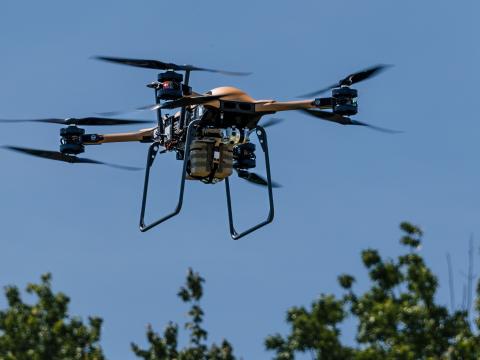A Marine Corps Body of Work
In a study of 2,173 Marines—1,435 men and 738 women, 196 of whom were postpartum—the U.S. Marine Corps’ Training and Education Command, in alliance with the United States Army Research Institute of Environmental Medicine, evaluated current warfighters’ body composition standards and have called for change effective January 1, 2023. The effort was conducted at the Marines’ Quantico, Virginia, base.
“This study was one of the most technologically advanced studies on the topic since the 1980s,” representatives stated in a press release. Participants were measured by height, weight and a method that uses circumference measurements around the neck and waist for a percentage of body fat, a chart known as the tape method.
Following the tape test, three assessments were made to measure tissue density. First, the dual energy x-ray absorptiometry (DEXA) scan, which was approved by the Food and Drug Administration in 1988, estimated body fat, lean body mass and bone density. In a second assessment, a two-compartment model 3D body scan assessed fat and lean mass. Finally, the bioelectrical impedance analysis (BIA), which measures body composition based on the rate at which an electrical current travels through the body, was used as a concluding assessment method.
The counter movement jump, a performance assessment, was also conducted during an upward jump on a force plate to measure participant force and movement.
The research showed that based on erroneous tape test assessments of exceeding body fat standards, the DEXA scan is needed as an additional method of measurement. “Our research demonstrated the taping method is still a viable solution to determine if a Marine is within an optimal body composition range,” Lt. Gen. Kevin Iiams, commanding general at the Training and Education Command, says. “However, we recognize that a more scientifically advanced method of determining body composition is required before a Marine is assigned to a program that could have career implications.”
Following the study, Marines who tape test over the allowable body fat percentage will receive a DEXA or BIA scan for accuracy. Additionally, the total allowable body fat for female Marines will be increased by 1%. “We also recognize that male and female Marines’ body composition standards did not similarly compare to performance-related body fat,” Gen. Iiams added. “Female standards were leaner than males … we have updated the maximum percentage allowed for females to reflect what the science told us was an equally balanced and standardized body composition across the force.” The new body fat standards for female Marines, effective January 1, 2023, will be:
-
Age 17-25: 27%
-
Age 26-35: 28%
-
Age 36-45: 29%
-
Age 46-51+: 30%
“Ultimately, this is about warfighting,” said Gen. David Berger, commandant of the Marine Corps, who received study findings and made final decisions on changes to be made. “We need to find the most practical, accurate and unbiased method of measuring body composition to maintain a healthy, ready force.”
As data continues to be collected, the U.S. Marine Corps has stated that further changes are likely to be made to the body composition program.




Comments